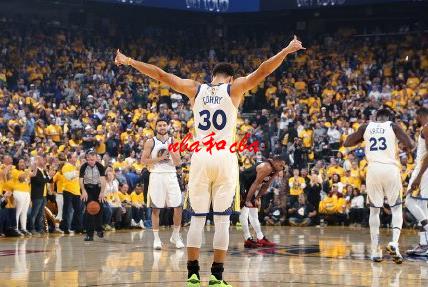
万圣节英文简介
万圣节英文简介
万圣节前夕,在每年的10月31日,是西方的传统节日。许多亚洲地区的人将万圣节前夕误称为万圣节。下面是我给大家提供的万圣节的英文简介,欢迎大家阅读参考!
【万圣节英文简介】
Halloween is an autumn holiday that Americans celebrate every year. It means "holy evening," and it comes every October 31, the evening before All Saints' Day. However, it is not really a church holiday, it is a holiday for children mainly.
Every autumn, when the vegetables are ready to eat, children pick large orange pumpkins. Then they cut faces in the pumpkins and put a burning candle inside. It looks as if there were a person looking out of the pumpkin! These lights are called jack-o'-lanterns, which means "Jack of the lantern".
The children also put on strange masks and frightening costumes every Halloween. Some children paint their faces to look like monsters. Then they carry boxes or bags from house to house. Every time they come to a new house, they say,"Trick or treat! Money or eat!" The grown-ups put treat-money or candy in their bags.
Not only children, but most grown-ups also love Halloween and Halloween parties because on this day,they can disguise themselves as personages or ghost as their imaginations will lead them. This bring them the satisfaction of being young.
【万圣节简介】
万圣夜英文称之“Halloween”,为“All Hallow Eve”的缩写,是指万圣节(All Hallow's Day)的前夜,类似于圣诞夜被称为“Christmas Eve”。“Hallow”来源于中古英语halwen,与holy词源很接近,在苏格兰和加拿大的某些区域,万圣节仍然被称为“All Hallow Mas”,意思是在纪念所有的圣人(Hallow)那一天,要举行的弥撒仪式(Mass)。
万圣夜通常与灵异的事物联系起来。欧洲传统上认为万圣节是鬼魂世界最接近人间的时间,这传说与中国的盂兰节类似。美国明尼苏达州的Anoka号称是“世界万圣节之都”,每年都举行大型的巡游庆祝。
【万圣节的起源】
两千多年前,欧洲的天主教会把11月1日定为“天下圣徒之日” (ALL HALLOWS DAY) 。“HALLOW” 即圣徒之意。传说自公元前五百年,居住在爱尔兰、苏格兰等地的.凯尔特人 (CELTS) 把这节日往前移了一天,即10月31日。
他们认为该日是夏天正式结束的日子,也就是新年伊始,严酷的冬季开始的一天。那时人们相信,故人的亡魂会在这一天回到故居地在活人身上找寻生灵,借此再生,而且这是人在死后能获得再生的唯一希望。
而活着的人则惧怕死魂来夺生,于是人们就在这一天熄掉炉火、烛光,让死魂无法找寻活人,又把自己打扮成妖魔鬼怪把死人之魂灵吓走。之后,他们又会把火种烛光重新燃起,开始新的一年的生活。传说那时凯尔特人部落还有在10月 31日把活人杀死用以祭奠死人的习俗。
到了公元1世纪,占领了凯尔特部落领地的罗马人也渐渐接受了万圣节习俗,但从此废止了烧活人祭死人的野蛮做法。罗马人庆祝丰收的节日与凯尔特人仪式结合,戴着可怕的面具,打扮成动物或鬼怪,则是为了赶走在他们四周游荡的妖魔。这也就是今天全球大部分人以古灵精怪的打扮,来庆祝万圣节的由来。
时间流逝,万圣节的意义逐渐起了变化,变得积极快乐起来,喜庆的意味成了主流。死魂找替身返世的说法也渐渐被摒弃和忘却。到了今天,象征万圣节的形象、图画如巫婆、黑猫等,大都有友善可爱和滑稽的脸。
罗马皇帝君士坦丁信主后,立基督教为国教,当时的基督教实际已演变成天主教。 君士坦丁下令全国人民都要皈依基督教,结果没有悔改的异教徒加入了教会,把各样 异教作风带进来,包括死节,他们要维持这节日为生活的一部分。
由于教会无法消除民众的异教风俗,只有把部分风俗圣化,特别是十月三一日的死 节。在第八世纪,罗马教皇定十一月一日为万圣日(All Saints’ Day),来记念教会史 上一切殉道的圣徒。这样,十月卅一日便是万圣日的前夕。天主教会容许民众在十月 卅一日守节,因为十一月一日是圣日。
后来All Saint’s Day 变成All Hallows Day, 而hallows是“神圣”的意思,十月卅一日便是万圣夜(All Hallows Evening)。Evening后来缩减为eve和een,前者是“前夕”的意思,后者是evening的 缩写,意即“夜晚”,便成为今天的Halloween,代表死节是万圣日的前夕。华人索性把十月三一日称为万圣节,其实该译作“万灵节”。
万圣节英文简介
Halloween, or Hallowe'en, a holiday celebrated on the night of October 31, is a mix of ancient Celtic practices, Catholic and Roman religious rituals and European folk traditions that blended together over time to create the holiday we know today.
万圣节前夜(每年10月31日),在其形成过程中逐渐融合了凯尔特习俗、天主教仪式和欧洲民间传统,最终形成了我们今天所见的这样一个节日。
Ancient
远古时期
Shades: Throughout ancient history, Shades meant the spirit of a dead person, residing in the underworld.
幽灵:远古时期,人们认为幽灵是生活在地下世界的死者的灵魂。
Carving gourds into elaborately decorated lanterns dates back thousands of years to Africa.
将葫芦精雕细刻、做成灯笼的习俗可追溯到几千年前的非洲。
800-450 B.C.
公元前800-450年
The ancient Celts believed that wearing masks would ward off evil spirits.
古凯尔特人相信戴上面具可以避开邪灵。
Pre-1st Century
1世纪前
Samhain: The Festival of Samhain is a celebration of the end of the Gaelic harvest season.
死神节:盖尔人(苏格兰和爱尔兰的凯尔特人)庆祝丰收季节结束的节日。
1st Century
1世纪
Gaels believed that the border between this world and the otherworld became thin on Sambain; because animals and plants were dying, it allowed the dead to reach back through the veil that separated them from the living.
盖尔人相信,在死神节,现世与冥界的边界会逐渐消失。动物和植物纷纷死去,而死者将穿过把他们同生者隔开的幕布重回世间。
Bonfires played a major role in the Festival of Samhain. Celebrants wore costumes, mostly skins and animal heads, and danced around bonfires.
篝火对于死神节来说是必不可少的。参加庆典的人们穿上动物的皮毛和头颅做成的服装,围着篝火舞蹈。
By A.D. 43, Romans had conquered much of Celtic territory. Two Roman festivals were combined with the Celtic celebration of Samhain: Feralia, a day in late October when Romans commemorated the passing of the dead, and a day to honor Pomona, Roman goddess of fruit and trees.
公元43年,罗马人占领了凯尔特人的大部分领土,并将两个罗马节日与死神节的传统结合起来:一个是纪念死者的Feralia节(十月末的一天),另一个是纪念罗马的果树女神Pomona的节日。
Werewolf: The original werewolf of classical mythology, Lycaon, a king of Arcadia who, according to Ovid's Metamorphoses, was turned into a ravenous wolf by Zeus. Possibly the source of the term lycanthropy.
狼人:古罗马诗人奥维德在他的《变形记》中描绘了古典神话中狼人的原型——阿卡迪亚王吕卡翁,由于触怒天神宙斯而被变成了一匹狼。也许“变狼妄想狂”一词就是来源于这个故事。
3rd Century
3世纪
In the Roman Catholic church, a commemoration of "All Martyrs" was celebrated between mid April and early May.
在每年四月中旬到五月初这段时间,罗马天主教会庆祝一个名为“众殉道者节”的纪念性节日。
7th Century
7世纪
The festival of All Siants dates to May 13 in 609 or 610, when Pope Boniface IVconsecrated the Pantheon at Rome.
公元609或610年,教皇卜尼法斯四世为罗马万神殿祝圣,并将5月13日定为“众圣人节”。
This date was an ancient pagan observation, the end of the Feast of the Lemures, in which the evil and restless spirits of all the dead were appeased.
这一节期原本是古老的异教节日——勒姆瑞斯(夜游魂)节的末尾,在这一节日期间人们试图安抚那些邪恶且永不安宁的亡魂。
8th Century
8世纪
Pope Gregory III designated November 1st All Saints' Day, a time to honor saints and martyrs.
教皇格列高利三世将每年11月1日定为“众圣人节”,以此纪念圣人和殉道者。
Many believe the pope was attempting to replace the Celtic festival of the dead with a related, but church-sanctioned holiday.
人们相信,教皇此举是为了用一个教会认可的节日来替代凯尔特的亡者之节日。
Saint Boniface declared that belief in the existence of witches was un-Christian.
圣卜尼法斯(680-754,本笃会修士,美因茨大主教)宣布,相信女巫的存在是不合基督教教义的。
10th Century
10世纪
The Catholic church made November 2nd All Souls' Day, a day to honor the dead.
天主教会将每年11月2日定为“万灵节”,以纪念死者。
The three Catholic celebrations, the eve of All Saints', All Saints', and All Souls', were called Hallowmas.
至此,天主教的三大节日——众圣人节前夜,众圣人节,万灵节,被统称为“Hallowmas”(即“万圣节”之意)。
Middle Ages
中世纪
Carved turnips in Ireland and Scotland are used as candle lanterns in windows to ward off harmful spirits.
在爱尔兰和苏格兰,人们将芜菁(形似萝卜)雕刻成灯笼放在窗台上,以此抵挡邪灵。
Soul cakes, often simply referred to as souls, were given out to soulers (mainly consisting of children and the poor) who would go from door to door on Hallowmas singing and saying prayers for the dead. Each cake eaten would represent a soul being freed from Purgatory.
另一项传统习俗涉及“灵魂饼”:在万圣节期间,小孩和穷人会挨家挨户地唱歌并为死者祈祷,人们则给他们一种被称作“灵魂饼”的点心作为报酬。据说每吃掉一个“灵魂饼”,就会有一个灵魂被从炼狱中拯救出来。
;Halloween不是万圣节
(原文与2019.10.31首发于公众号:Peter的英语自习室)
今天是万圣节前夜,我来和大家分享一些万圣节常用的英文表达,并给大家推荐一部“好看”的恐怖片。
单词
- Happy Halloween -
Halloween 万圣节前夕(10.31),注意要和All Saints' Day/All Hallows' Day/Hallowmas区分开,后者是万圣节(11.1),别搞混了哟~Trick or treat 不给糖就捣蛋Pumpkin 南瓜Sweet/Candy 糖果Mischief 恶作剧Ghost 鬼魂Witch 女巫Devil 恶魔Mask 面具Costume 服装Skeleton 骨架Vampire 吸血鬼Werewolf 狼人Bat 蝙蝠Spider 蜘蛛Candle 蜡烛句子
- Happy Halloween -
1. You scared me! 你吓坏我了!
2. What a horrible night! 多么可怕的晚上啊!
3. My heart keeps pumping. 我的心脏怦怦跳。
南瓜灯的由来
- Happy Halloween -
Jack-O-Lantern 南瓜灯
南瓜灯源于古代爱尔兰。传说一个名叫Jack的人,是个醉汉且爱恶作剧。在万圣节当日,他设圈套将魔鬼困在一棵树上,他不许魔鬼下来,直至恶魔答应永远不让他住在地狱。Jack死后,因他不相信神,他不能进天堂,而魔鬼也不让他入地狱,为了协助Jack找到回人间的路径,魔鬼给了他一块燃烧的炭,Jack将这燃烧的炭放在他以大红萝卜雕刻成的一个灯笼内,这第一个“Jack的灯笼”,帮助找寻他的路径回爱尔兰,但他从没找着,于是他永远带著灯笼流浪人间。
电影推荐
- Happy Halloween -
Dracula(吸血鬼僵尸惊情四百年)
说是恐怖片,其实算不上恐怖,剧情也没啥令人印象深刻的。我推荐完全是因为演员阵容太强大,这部电影真的很“好看”。有加里·奥德曼,主演过Léon(这个杀手不太冷)、Batman Begins(蝙蝠侠:侠影之谜)和Darkest Hour(至暗时刻),还有基努·里维斯,主演过The Matrix(黑客帝国)系列电影,当然还有我最喜欢的薇诺娜·瑞德,主演过Edward Scissorhands(剪刀手爱德华)。莫妮卡·贝鲁奇也有部分镜头,她是谁我应该就不用再介绍了,懂的都懂。
总而言之,满屏帅哥美女,万圣节前夜观看,再合适不过。
以上就是今天的全部内容,祝大家生活愉快,明天见~觉得有用的话快来关注我们吧~
万圣节简介 英文版
The Celtic people, who lived more than 2000 years ago feared the evening of Oct. 31 more than any other day of the year. It was the eve of their festival of Samhain. Samhain was a joyful harvest festival that marked the death of the old year and the beginning of a new one. The day itself was a time for paying homage to the sun god Baal who had provided the people with the ripened grain for use in the upcoming winter. Come evening evil spirits were everywhere. Charms and spells were said to have more power on the eve of Samhain. Several rituals were performed by the Celtic priests, Druids, to appease the Lord of the Dead.
拓展资料:万圣节简介中文版
万圣节前夜是在10月31日庆祝的一个节日,根据传统,万圣节前夜的庆祝活动从太阳落山开始。在很久以前,人们相信在万圣节前夜女巫会聚集在一起,鬼魂在四处游荡。现在,大多数人们不再相信有鬼魂和女巫的存在了,但是他们仍然把这些作为万圣节前夜的一部分。
黑色和橙色仍然是万圣节前夜的一部分,黑色是夜晚的象征,而橙色代表着南瓜。南瓜灯是用雕刻成脸型,中间挖空,再插上蜡烛的南瓜做成的,带来一个毛骨悚然的灼热面孔。
盛装是最受欢迎的万圣节风俗之一,尤其是受孩子们的欢迎。按照传统习俗,人们会盛装(穿戴一些特殊的服饰,面具或者装饰)来吓跑鬼魂。
流行的万圣节服装包括vampires(吸血鬼),ghosts(死者的灵魂)和werewolves(每当月圆时就变成狼形的人)。
欺骗或攻击是现代万圣节的风俗。孩子们穿着特殊的衣服走街串巷,讨取糖果和玩具之类的赏赐。如果他们得不到任何的赏赐,就可能会对屋主大搞恶作剧或者胡闹了。
南瓜灯的传统来自于一个民间传说。一个名叫Jack的人戏弄了恶魔,之后就不得不提着一盏灯在地球上流浪。南瓜灯是用雕刻成脸型,中间挖空,再插上蜡烛的南瓜做成的。
和万圣节有关的迷信还有很多。迷信是一种不合常理的想法,比如认为13是不吉利的数字!
万圣节还和一些诸如鬼魂和吸血鬼之类的超自然的生物有关。这些生物不是自然界的一部分。他们实际上是不存在的......或许他们其实真的存在?
女巫是万圣节很受欢迎的人物,人们认为她们具有强大的魔力。他们通常戴着尖顶的帽子,骑在扫把上飞来飞去。
恶兆也是万圣节庆祝活动的一部分。人们相信恶兆会带给坏运气,黑猫、蜘蛛或者蝙蝠都算是恶兆。
万圣节简介 英文版
Halloween万圣节
Halloween is the night of the 31st of October and is traditionally said to be the time when ghosts and witches can be seen. On Halloween, children often dress up as ghosts and witches.
万圣节是每年的10月31日晚,传说此时可见鬼巫,当晚儿童常化装成鬼巫尽情玩闹。
拓展资料:
万圣节又叫诸圣节,在每年的11月1日,是西方的传统节日;而万圣节前夜的10月31日是这个节日最热闹的时刻。为庆祝万圣节的来临,小孩会装扮成各种可爱的鬼怪向逐家逐户地敲门,要求获得糖果,否则就会捣蛋。而同时传说这一晚,各种鬼怪也会装扮成小孩混入群众之中一起庆祝万圣节的来临,而人类为了让鬼怪更融洽才装扮成各种鬼怪。
例如:
1、I invited him to the halloween ball tonight.
我邀请他今晚来万圣节的舞会了。
2、We had to start classes on Christmas and Halloween activities.
我们班中展开过关于圣诞节和万圣节的活动。
3、We need some chocolate and some pumpkins for Halloween.
在万圣节前夕我们需要一些巧克力和南瓜。
4、Both children and adults dress up on Halloween.
小孩和大人在万圣节时都乔装打扮。
5、We eat a lot of special Halloween chocolates and candies.
我们吃很多特制的万圣节巧克力和糖果。
6、Today is Halloween, Mom bought me this dress with that funny little hat.
今天是万圣节,妈妈给我买了这件小裙子,还有个滑稽的帽子。
百度百科万圣节





